ABsteak Makes A Splashy Opening in San Francisco’s Union Square
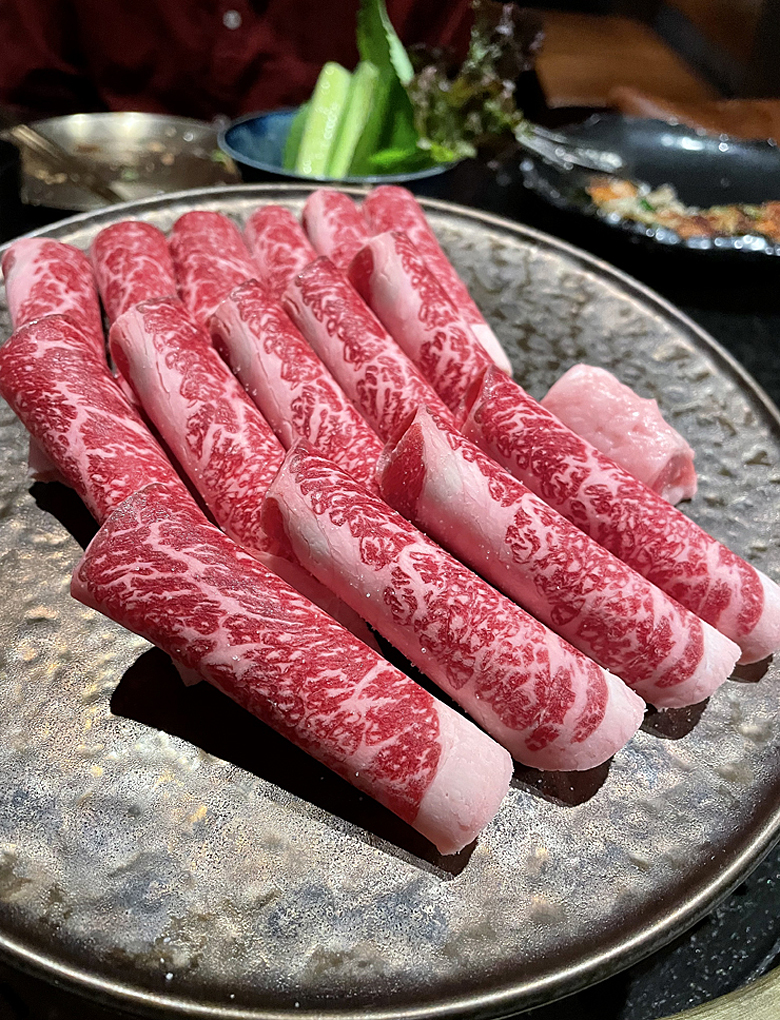
Upscale Korean steakhouse ABsteak opened in San Francisco’s Union Square last week with flash and panache, along with plenty of fire, but no smoke, well, thanks to its custom grill-tops that vacuum it all away.
It’s the 28th restaurant worldwide for Seoul-born Chef Akira Back, and only his second one in California (the first being in Los Angeles). In the next two years, he plans to open another 10 around the globe.
Quite the accomplishment for Black who was once a professional snowboarder.
I had a chance to check out the glitzy 6,500-square foot subterranean restaurant, when I was invited in as a guest earlier this week.
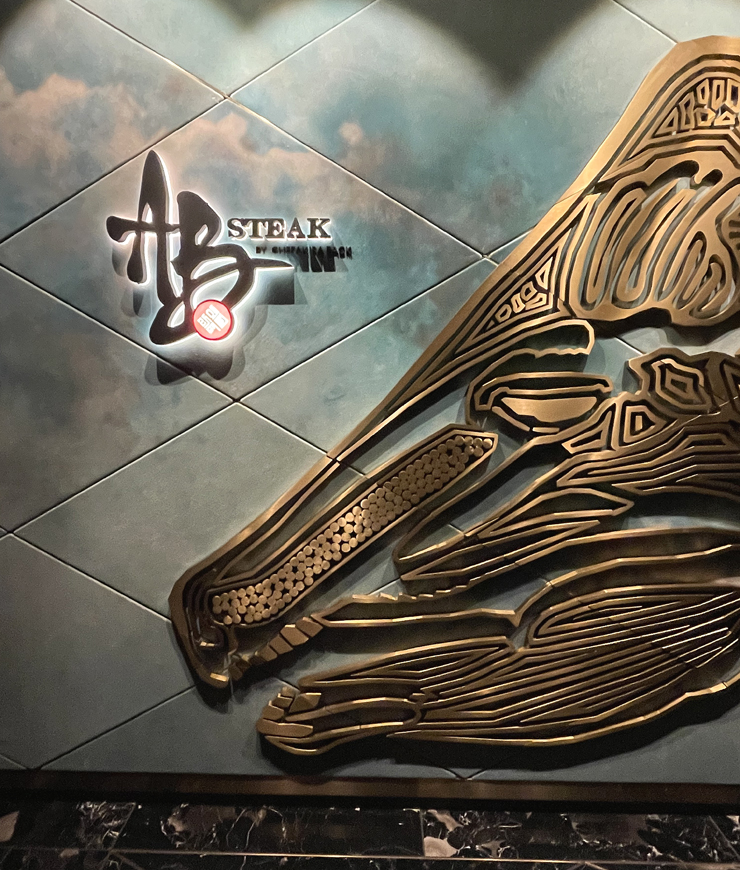
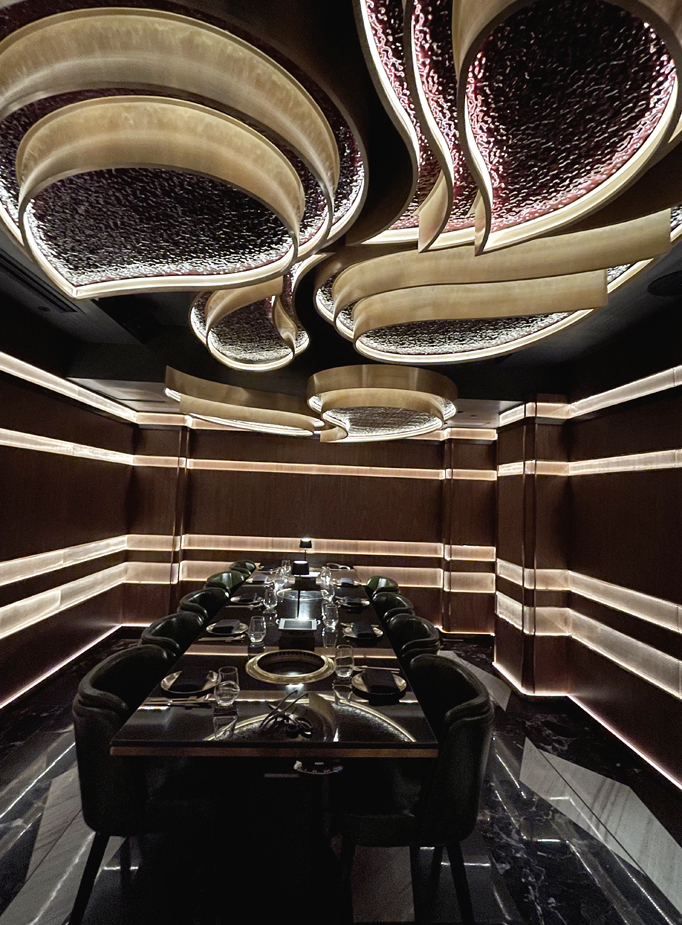
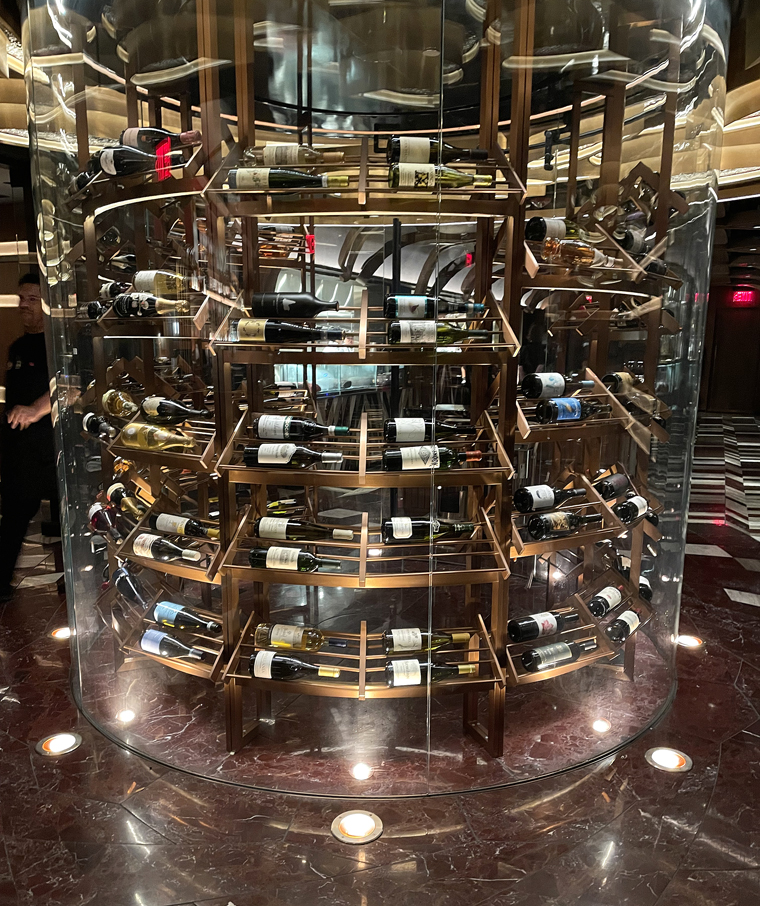
Take the stairs or elevator down one level to find the entrance to the restaurant that’s filled with intriguing details. Look up to find a dramatic ceiling with curving and angular steel supports that change as you walk from the bar-lounge, past the showstopping 200-bottle circular glass wine display and into the dining room. Viewed together, they are supposed to evoke the bones, blood vessels and vertebrae inside a cow.
The painted paneling and ceramic pieces on display were created by Back’s mother, an artist in her own right.



Refrigerator cases fronting the open part of the kitchen display impressive cuts of beef, lest you forget what the star attraction is at this restaurant.
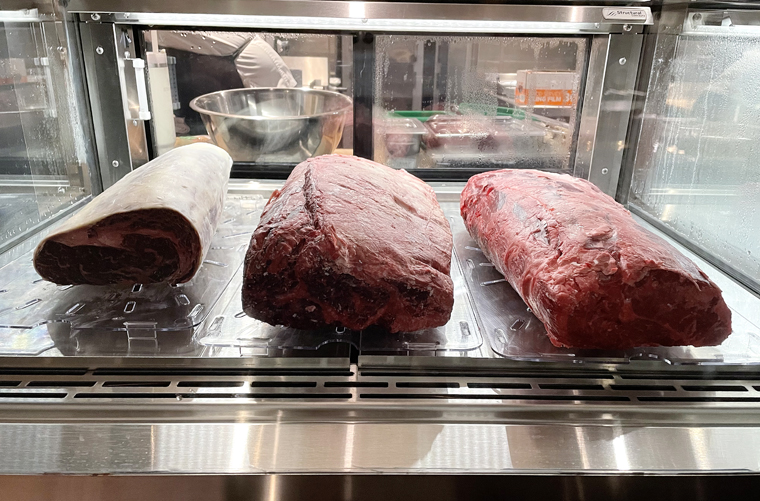
Tables gleam with brass cutlery. In fact, the restaurant had to bring in a specialist to teach the staff how to polish and care for it all.
A grill is inset into each table. But you won’t be doing any of the grilling, yourself. Just sit back and enjoy the show as your server does all the work to ensure the meat is cooked to ideal medium-rare.
Unlike your usual mom-and-pop Korean barbecue joint, you needn’t fear leaving the place, smelling like you just emerged from a forest fire. Instead, the plumes of smoke from the fiery binchotan are sucked up by a vacuum system underneath the table. You’ll only see a few wisps here and there when a server comes to swap out the grilling plate or grate, which is done each time a different meat is cooked to ensure nothing sticks.
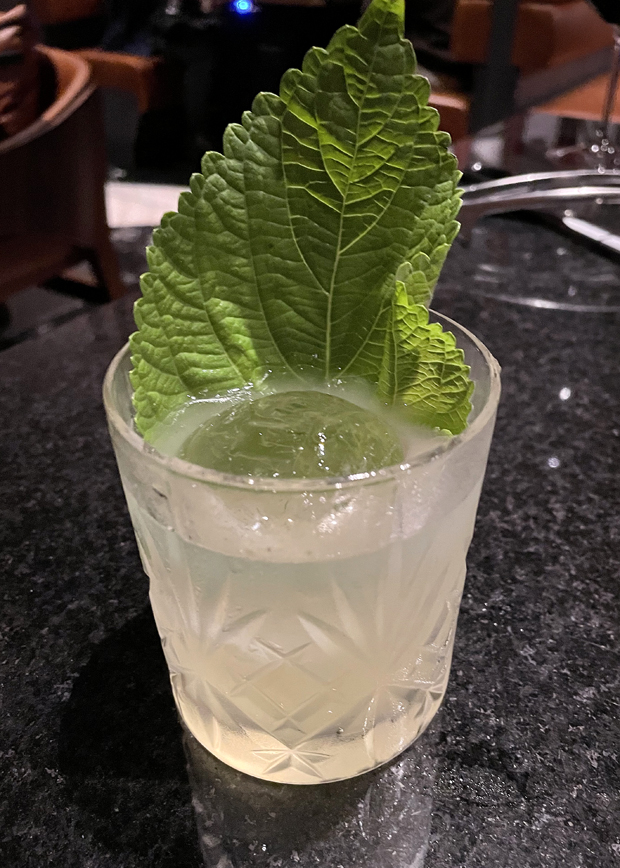
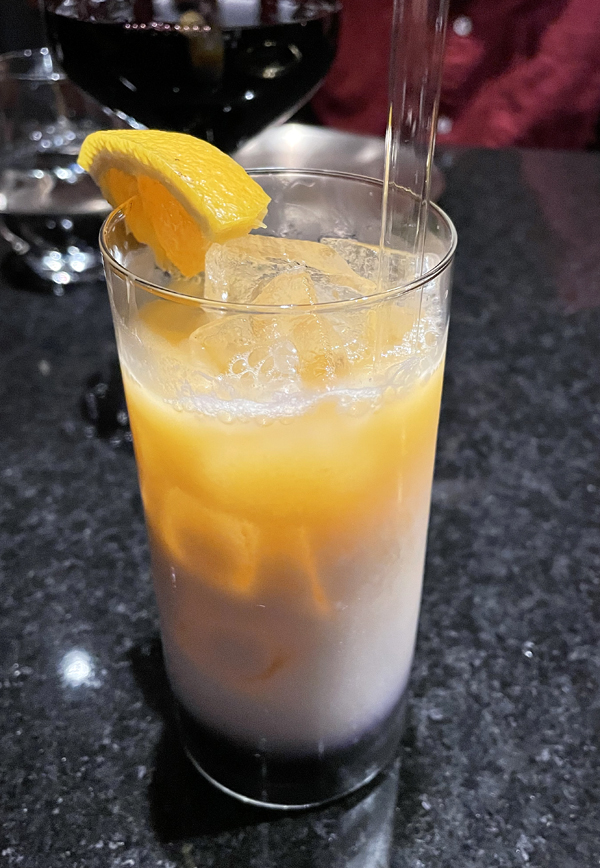
Start with a drink. There’s an impressive array of Japanese whisky to enjoy, and cocktails such as the Kkaenip margarita ($18), a citrusy, minty, and grassy blend of two types of tequila, Ancho Reyes Verde with the green chile taste of poblanos, yuzu, lime, and shiso bitters. It comes garnished with an ice sphere and a fresh shiso leaf.
Or opt for the non-alcoholic, and playfully named “Obi Wan Ken-Ube” ($10), a creamy concoction of house-made horchata, salted ube, orange, lemongrass, cinnamon, and clove. It helps douse the heat if you’ve had too much kimchi, but just know that it’s also quite sweet.
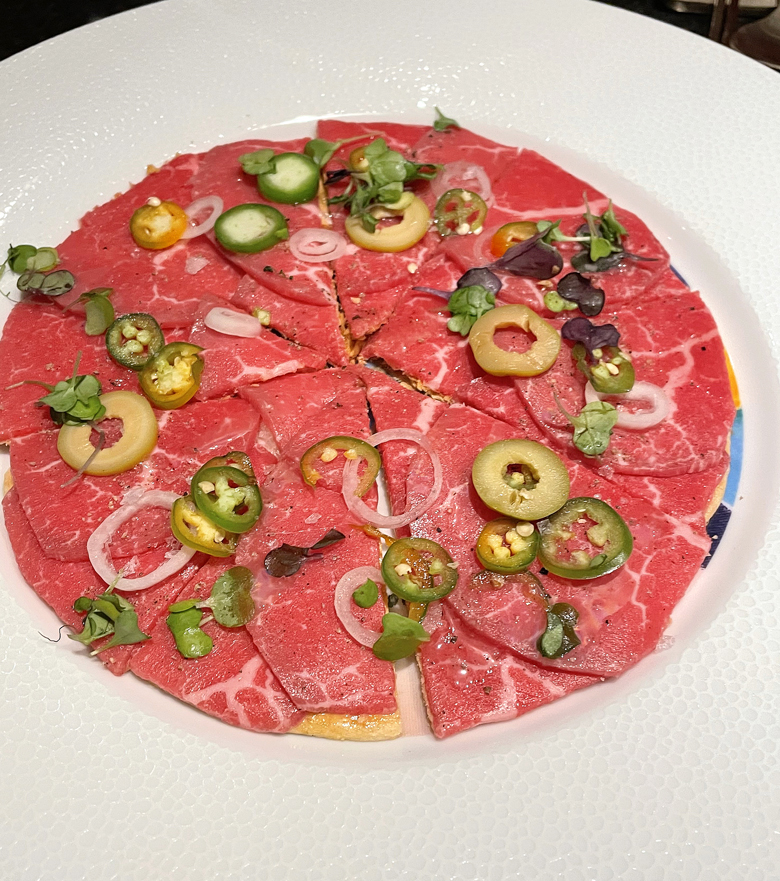
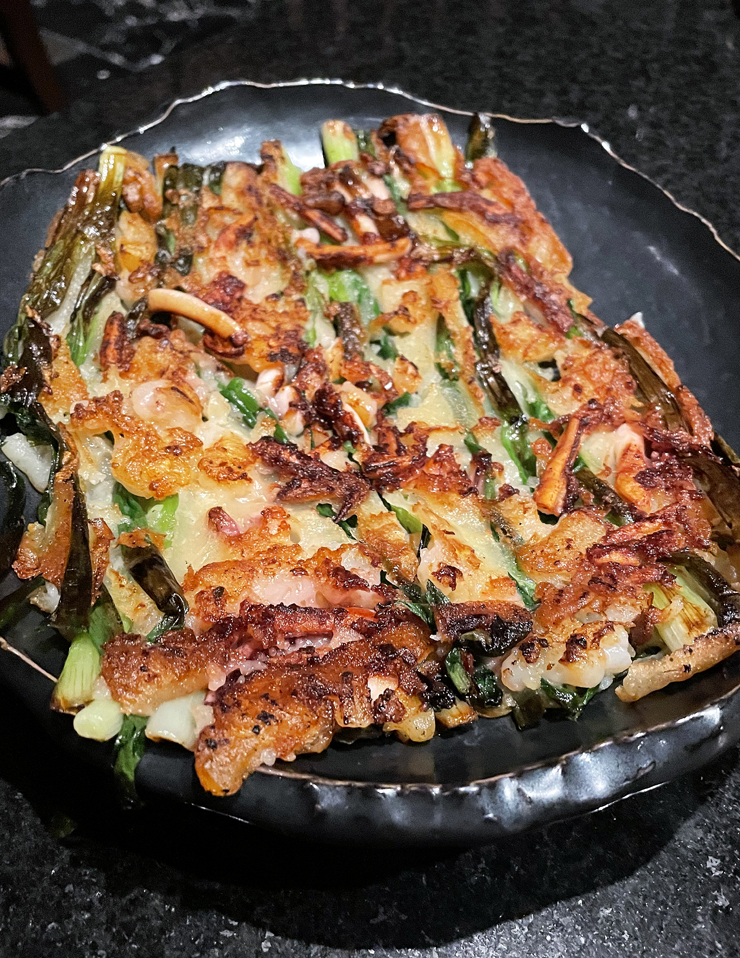
The restaurant’s signature is the AB Pizza ($29), a cracker-thin, tortilla-like crust that’s draped all over with thin slices of raw Australian Wagyu, dabs of ponzu aioli, green olives, micro greens, shallots, white truffle oil, and slices of Serrano pepper. If you really want to go to town, you can add fresh truffles or Ossetra caviar for an additional $25.
Pick up a slice and eat it with your hands just like pizza. The raw beef is nicely ice cold and tastes rich and buttery, with the chiles adding pops of grassy, fruity heat to clear the palate.
Who can ever resist a seafood pajeon ($24) at a Korean restaurant? This crisp pancake is loaded with slender, long lengths of sweet tasting scallions, and bits of briny shrimp and squid.
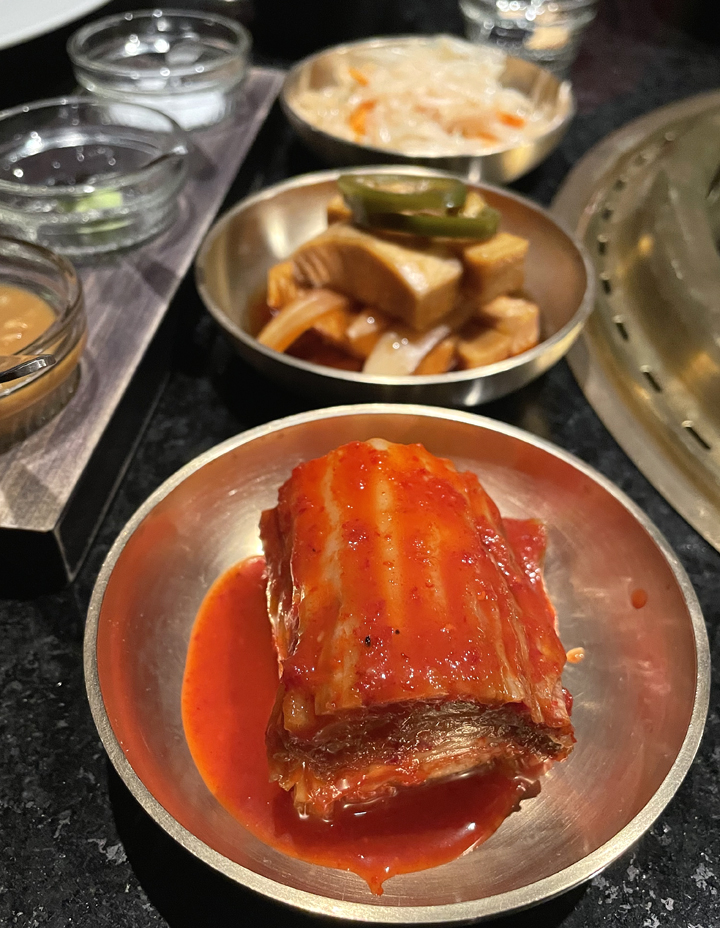

Order anything for the grill, and it will come with bowls of Maldon salt, wasabi paste, and Korean bean paste, and assorted lettuces, cucumber spears, and shiso leaves. There will also be banchan that includes house-made Napa cabbage kimchi with salted shrimp, Korean-style pickled daikon, and seasoned mung bean sprouts. The banchan are $3 each if you order them separately or want seconds, as unlike your mom-and-pop eatery, you’ll be charged for it here.
Our server Amy readied the grill by rubbing a small piece of Wagyu all over to grease it. Then, one by one, she carefully added thin, curled slices of chadol or Australian Wagyu brisket ($6 ounces for $48), letting each briefly caramelize before flipping them over. The aroma of the fat hitting the hot plate was intoxicating and got your appetite revved if it wasn’t already. When each piece was done, she transferred it to a warming grate. (See video.)
The fatty edges of the brisket got wickedly crisp, a real treat in and of itself. The meat was so tender, juicy, and incredibly smokey tasting.
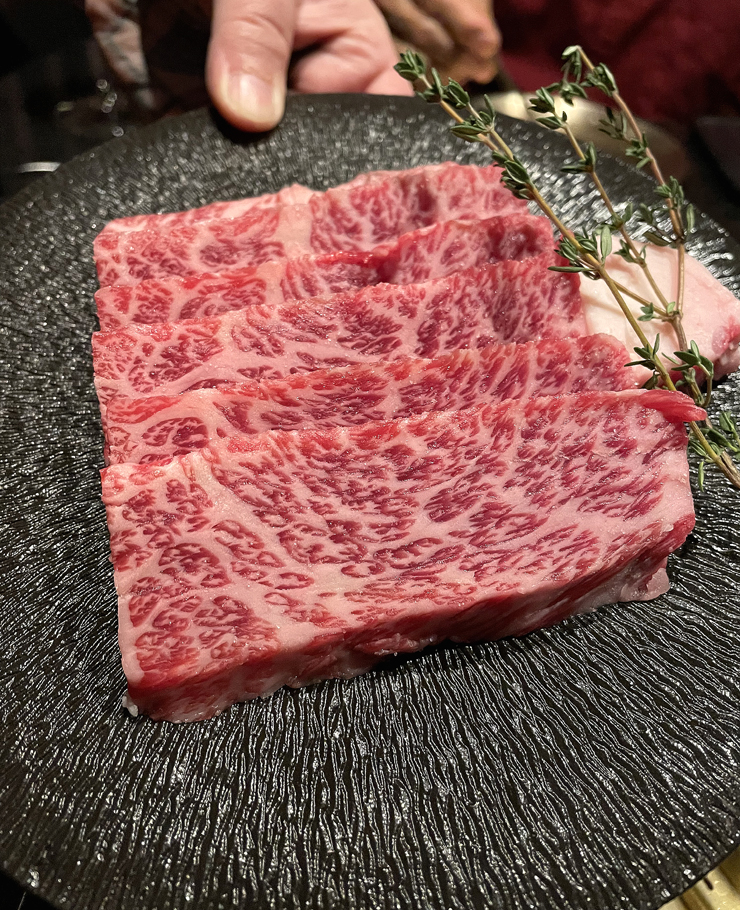
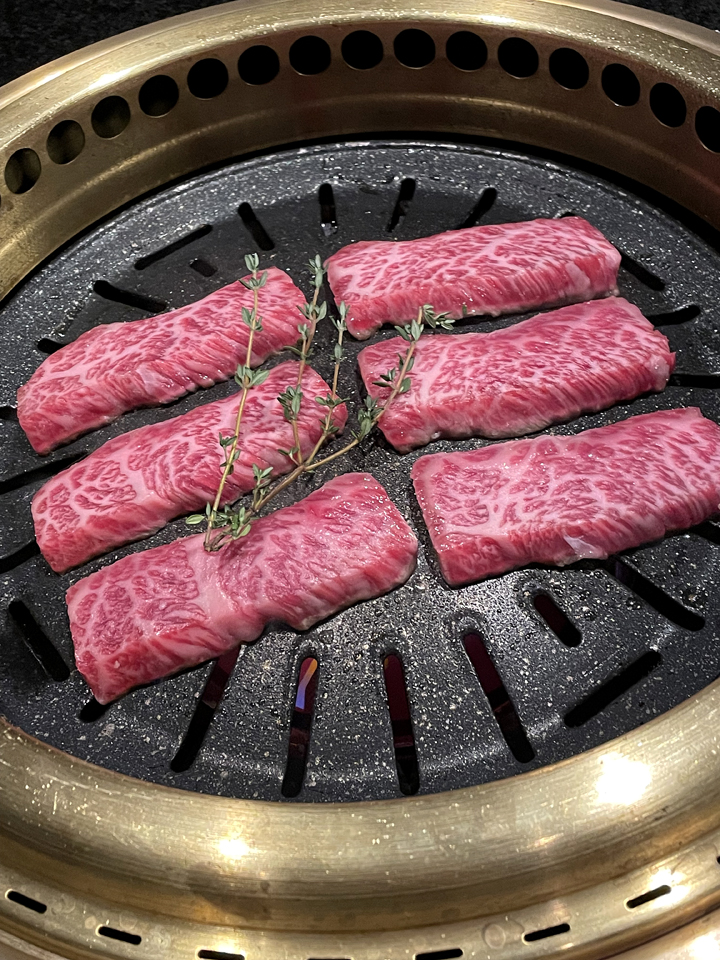
Next came slices of heavily marbled Snow Flower kkotsal or Australian Wagyu boneless short rib (6 ounces for $68) to sizzle on the grill. More melty in your mouth, these short rib slices gushed with fatty juices.
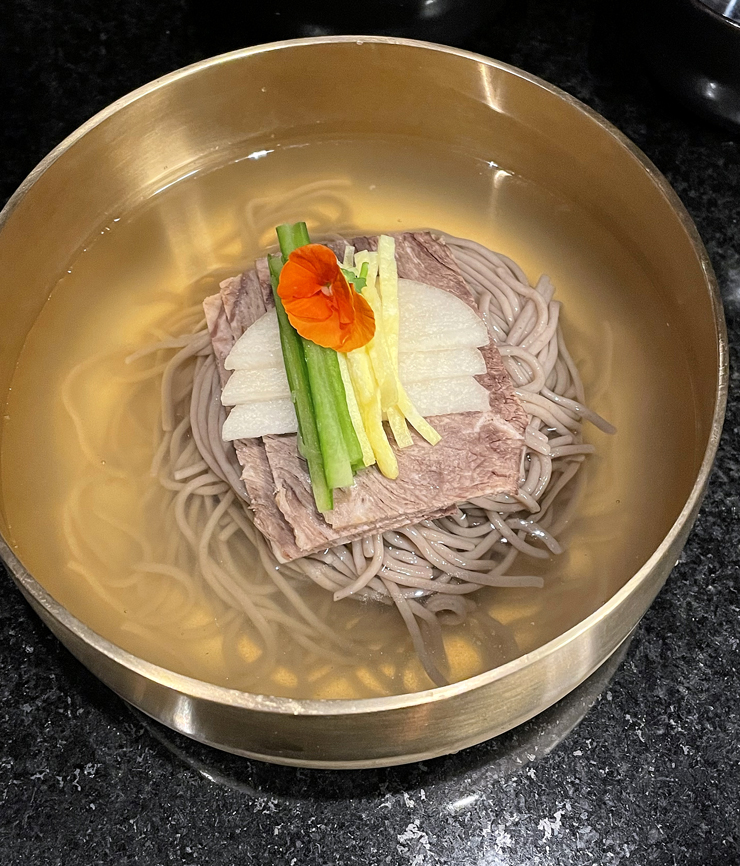
To counter the richness of the beef, bowls of pyong yang naeng myun ($24) were served alongside. This is a classic dish of cold buckwheat noodles that are chewier than their Japanese cousin. The noodles are served in a cold beef broth, which acted almost as a palate cleanser with its clean taste and slices of Korean pear and cucumber afloat in it. Of course, there was beef, too, in the form of poached, thin slices.
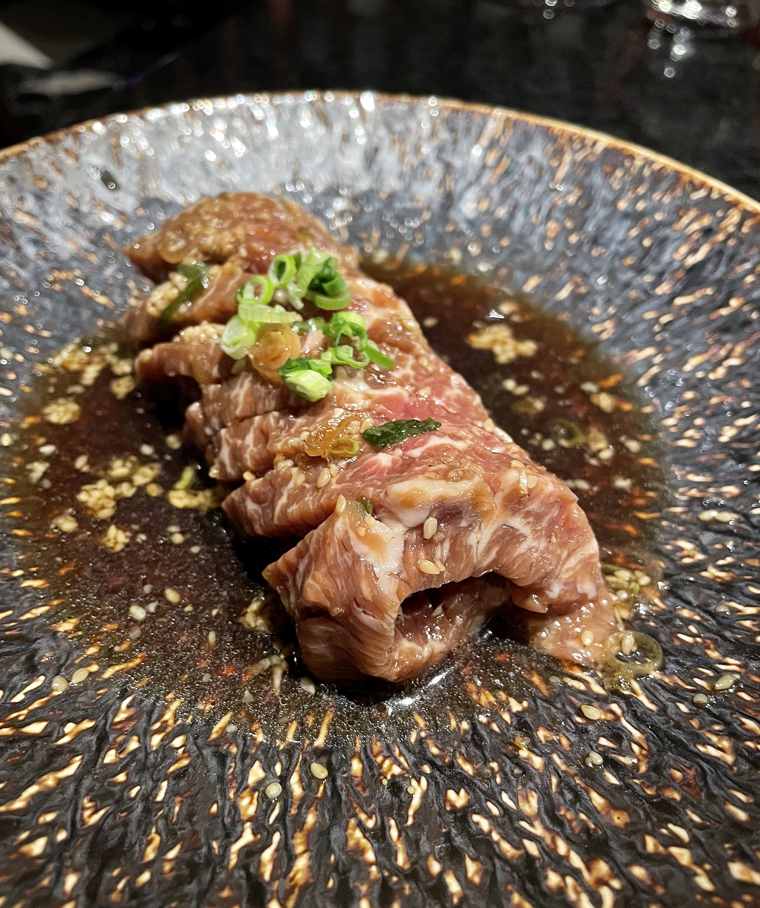
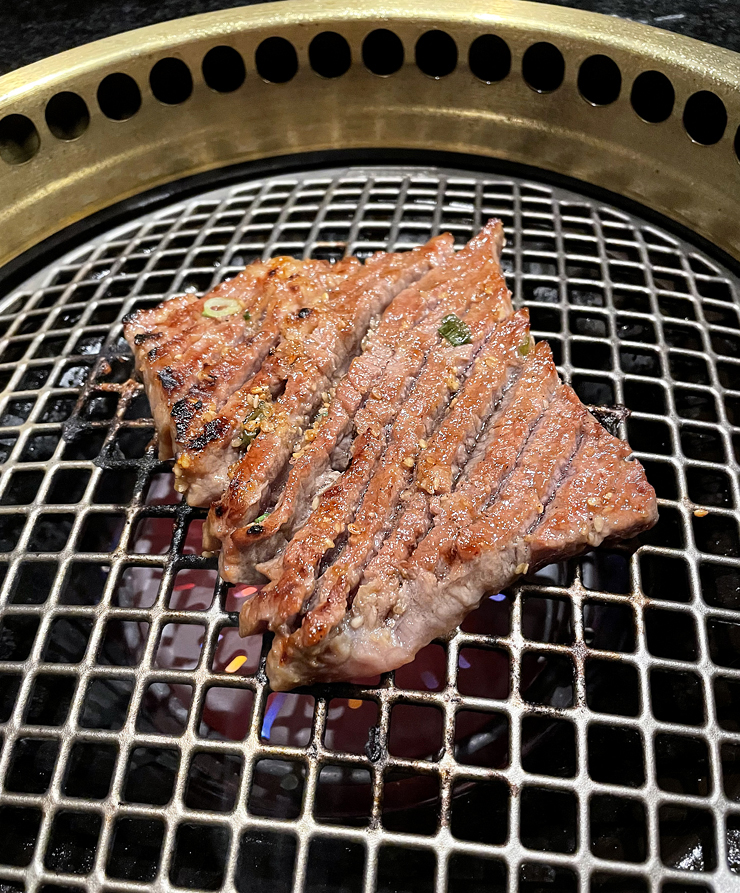
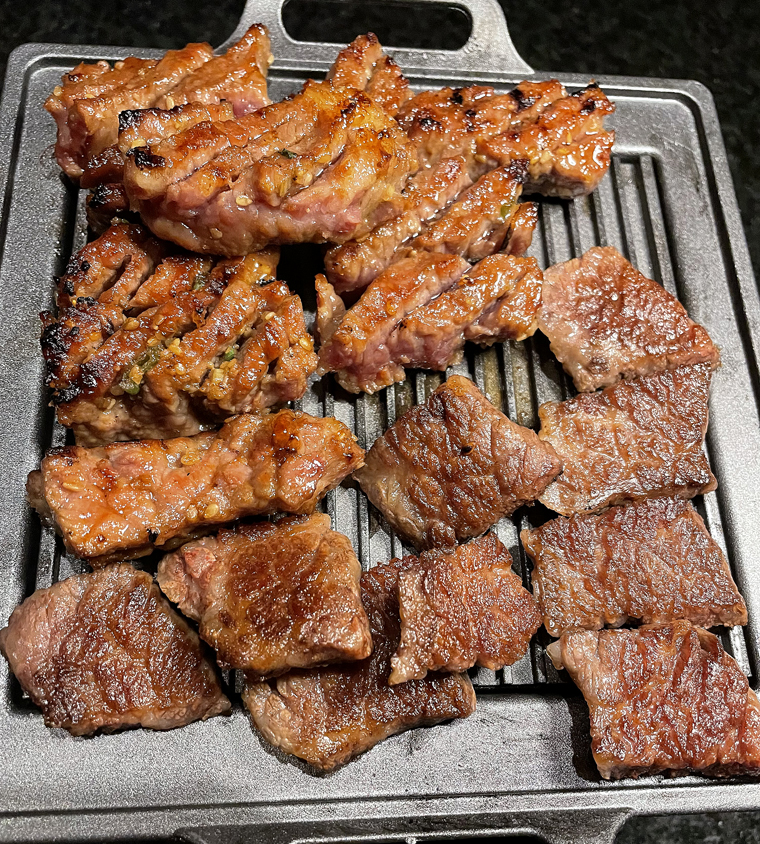
The final grilled beef item was my favorite, the marinated galbi (6 ounces for $54) made of USDA prime boneless short rib. It was accordion-scored, then placed on the grill, before our server Amy flipped it over, then finally cut it into bite-size pieces. With a slightly sweet soy taste, the galbi was the epitome of succulent.
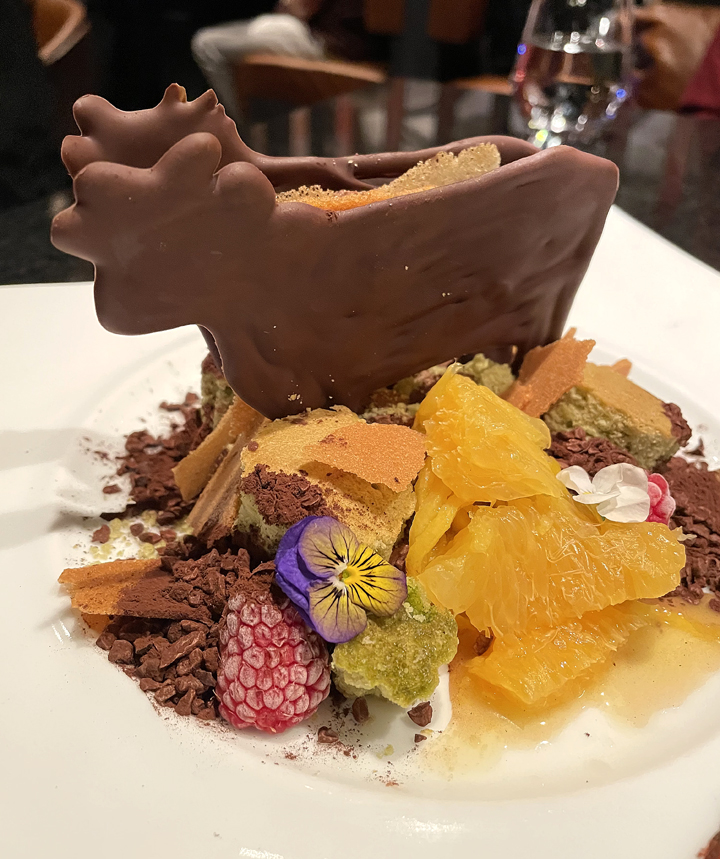
For dessert, the Hanwoo ($24) is the priciest option. But it’s easily shareable by at least two people. It’s also a cute choice that plays into the theme of the restaurant. When the plate arrives, its centerpiece is dark chocolate and brown butter tuille sandwich formed into the shape of a cow with a layer of orange marmalade with long slivers of zest inside. Its pasture is a mound of thick, dark chocolate mousse covered in frozen raspberries, orange supremes, cocoa nibs, edible flowers, and matcha cake pieces that were unfortunately a little dry.
You’re instructed to use your spoon to hammer the cow cookie into smithereens to enjoy it with everything else on the plate. It’s a little bit of this, a little bit of that, and hits the spot if you love the combo of chocolate and bitter orange.
Demand for reservations has been so great, Amy explained, that the restaurant had to limit them at the start to make sure it can ramp up proficiently to handle the crowds. That’s not blowing smoke, but the sweet smell of success.
